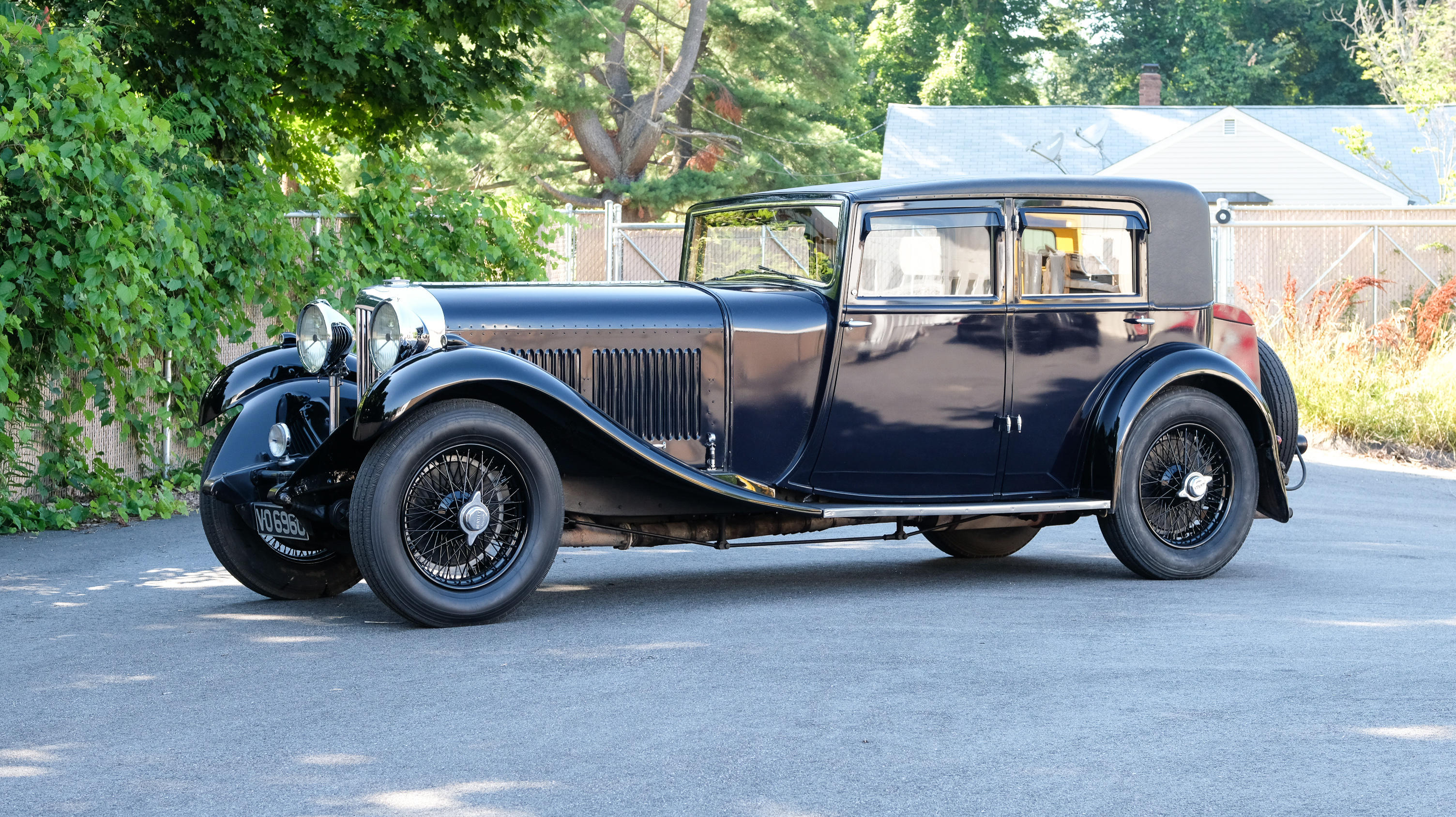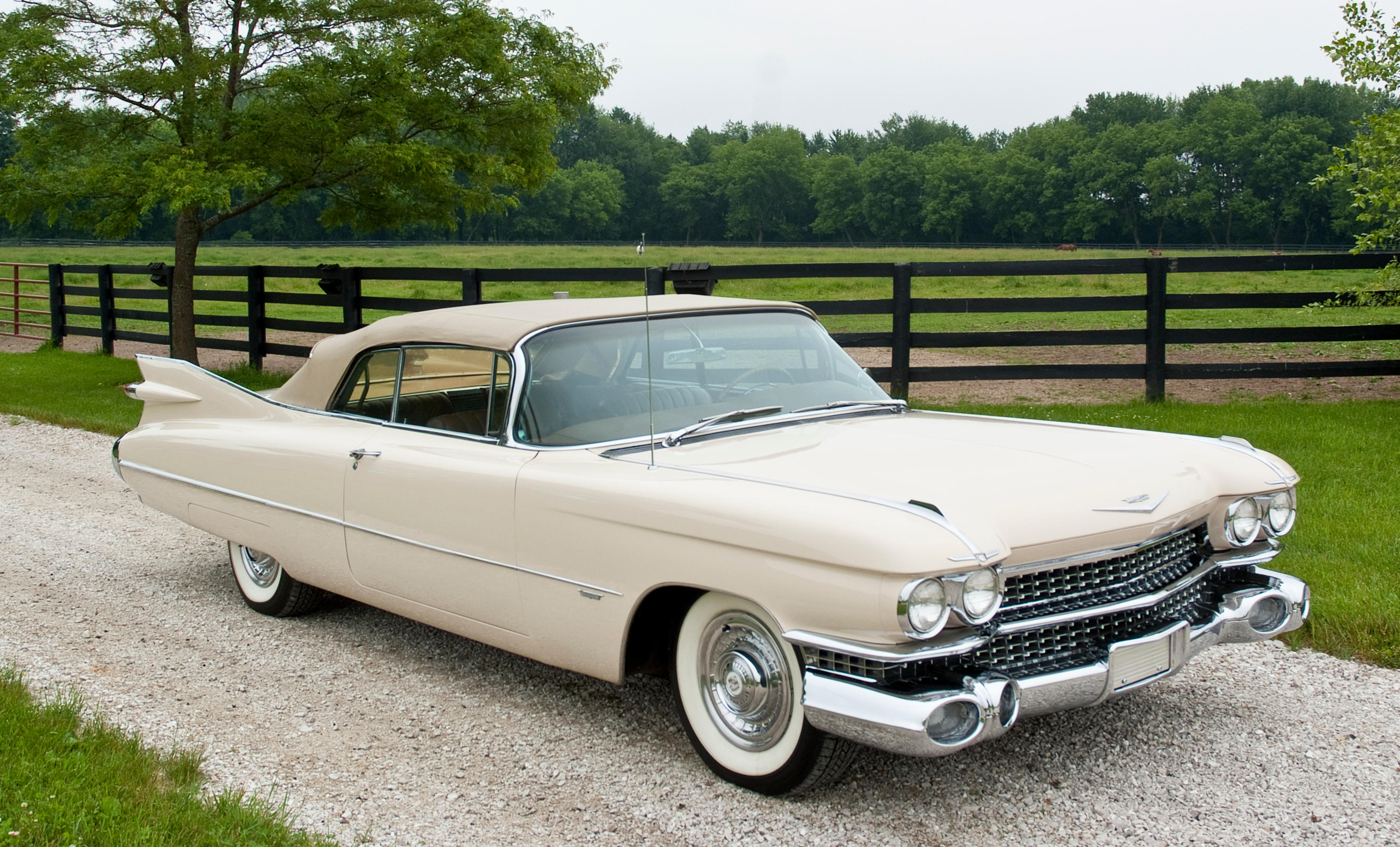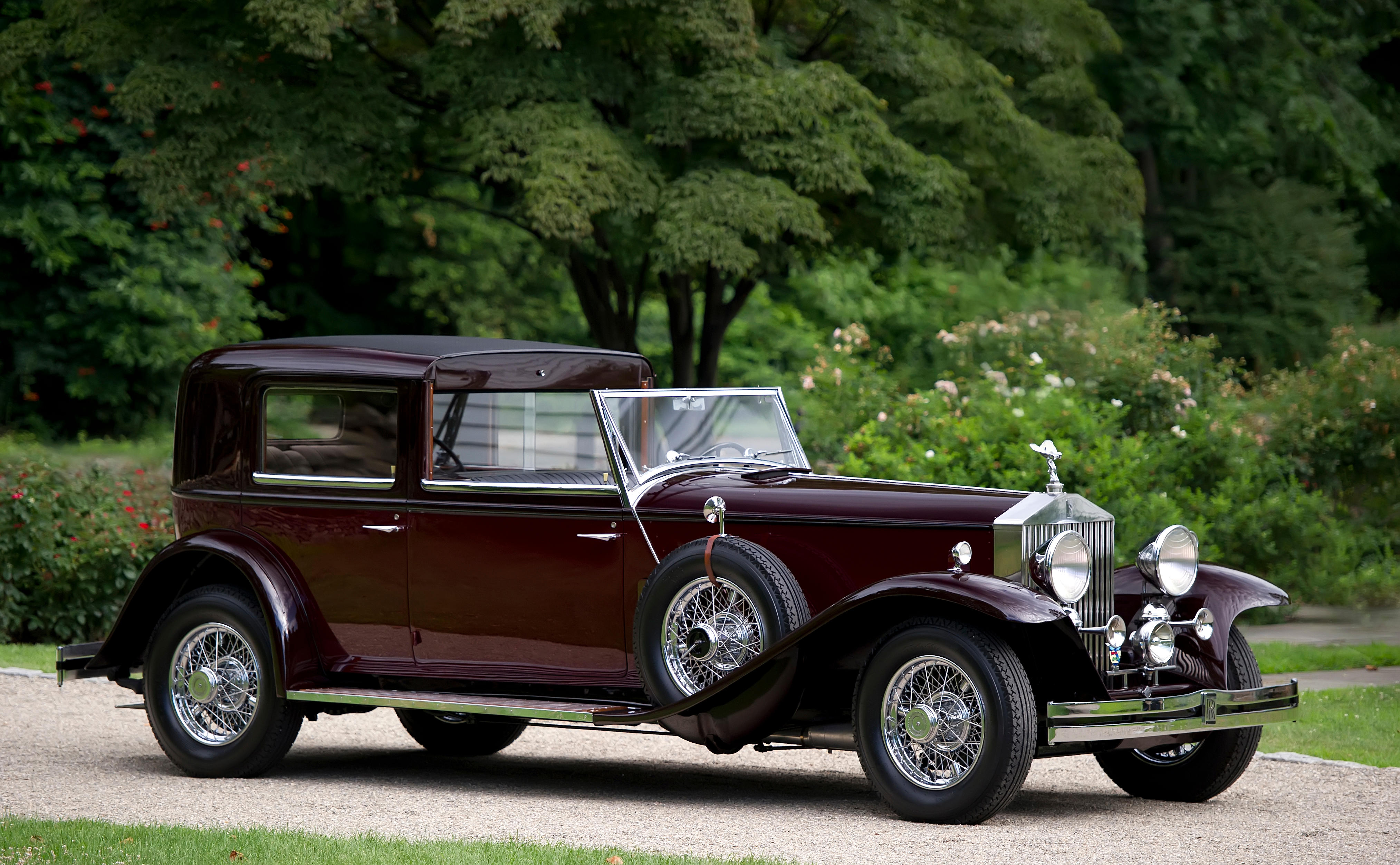FORMERLY IN THE COLLECTIONS OF CHARLES E.C. MARTIN AND L. SCOTT BAILEY 1931 ALFA ROMEO TIPO 6C-1750 SUPERCHARGED GRAN SPORT SPYDER COACHWORK BY ZAGATO Chassis No. 10814368 Engine No. 10814368 Red with red leather interior Engine: six-cylinder, twin overhead camshafts, supercharged, 1,750cc, 85bhp at 4,500rpm; Gearbox: four-speed manual; Suspension: semi-elliptic leaf springs front and rear; Brakes: four wheel mechanical drum. Right hand drive. The 6C series had been founded as early as 1924 when Alfa Romeo engineer, Vittorio Jano, was detailed to develop a medium capacity light car with brilliant performance. The great engineer chose the balance and pick-up characteristics of an in-line six cylinder engine and combined them with a very lightweight and nimble handling chassis design. Much experience was gained in the development of his AIACR World championship winning Alfa Romeo P2 Grand Prix car of 1924-30, which was built into this production series. The prototype, initially known as the 'NR' but subsequently renamed '6C-1500', was unveiled at the Salone dell'Automobile Milano in April 1925, and then reappeared at both the major Paris Salon and the London Motor show. Deliveries to customers of the original single-camshaft version commenced in 1927 and the general reception was so enthusiastic that a second series of twin-cam variants followed. Many 6C-1500s were employed in competition, supercharged variants doing particularly well in sports category events in 1928 and 1929. The subsequent enlargement of a similar basic engine configuration to the 6C-1750 model involved increases in both bore and stroke from the 1500's 62mm x 82mm to the 1750's 65mm x 88mm, displacing 1,752cc. These engines were offered with or without supercharging, delivering respectively 85bhp or 64bhp at 4,500rpm. Perhaps more significantly, the supercharged 1750 engine developed considerably more mid-range torque than the unblown unit, making it a most effective weapon for racing and hill-climbing, while also doubling as a genuinely high-performance sporting road car. The 1750 Gran Sport is regarded as one of the finest sports racing cars of its time and its race record, with numerous wins in Mille Miglia, Tourist Trophy and countless other races in the hands of Nuvolari, Campari, and Varzi, is nothing short of legendary. This desirable example from the 5th series of production carries the highly striking Zagato coachwork. It appears that this car has an interesting early provenance and in 1934 was owned by the famous English racing driver, Charlie Martin. Mr. Martin was an active race driver in the mid 1930's campaigning for several seasons in a Type 59 Bugatti and upgrading to a P3 Alfa Romeo which he raced extensively in 1936. While in the United Kingdom, the car was registered AXA 758. The car later moved to the USA and at some stage, probably the late 1960s, came into the ownership of Mr. Scott Bailey, the founder and long time editor and publisher of Automobile Quarterly . Mr Bailey recalls that he purchased the car from a professor in Pennsylvania and kept the car for around two years. He later started to strip the car down with the intention of having it professionally restored, however, owing to business committments the car was very reluctantly sold...indeed he is still regretful to this day! A short while later the car passed through the hands of a collector in Washington, PA. In the 1980s the car was sold to a prominent Japanese collector who had the well-known English restorer, Tony Merrick, undertake a full restoration. This work was gradually undertaken between 1988 and 1993. This body-off restoration included a full engine rebuild, which necessitated a new cylinder block, pistons, valves and bearings. The gearbox had new gears installed and a new clutch plate was fitted. The radiator was re-cored and the road wheels rebuilt. A complete re-trim was undertaken and the bodywork repainted. This car was never delivered to Japan followin
FORMERLY IN THE COLLECTIONS OF CHARLES E.C. MARTIN AND L. SCOTT BAILEY 1931 ALFA ROMEO TIPO 6C-1750 SUPERCHARGED GRAN SPORT SPYDER COACHWORK BY ZAGATO Chassis No. 10814368 Engine No. 10814368 Red with red leather interior Engine: six-cylinder, twin overhead camshafts, supercharged, 1,750cc, 85bhp at 4,500rpm; Gearbox: four-speed manual; Suspension: semi-elliptic leaf springs front and rear; Brakes: four wheel mechanical drum. Right hand drive. The 6C series had been founded as early as 1924 when Alfa Romeo engineer, Vittorio Jano, was detailed to develop a medium capacity light car with brilliant performance. The great engineer chose the balance and pick-up characteristics of an in-line six cylinder engine and combined them with a very lightweight and nimble handling chassis design. Much experience was gained in the development of his AIACR World championship winning Alfa Romeo P2 Grand Prix car of 1924-30, which was built into this production series. The prototype, initially known as the 'NR' but subsequently renamed '6C-1500', was unveiled at the Salone dell'Automobile Milano in April 1925, and then reappeared at both the major Paris Salon and the London Motor show. Deliveries to customers of the original single-camshaft version commenced in 1927 and the general reception was so enthusiastic that a second series of twin-cam variants followed. Many 6C-1500s were employed in competition, supercharged variants doing particularly well in sports category events in 1928 and 1929. The subsequent enlargement of a similar basic engine configuration to the 6C-1750 model involved increases in both bore and stroke from the 1500's 62mm x 82mm to the 1750's 65mm x 88mm, displacing 1,752cc. These engines were offered with or without supercharging, delivering respectively 85bhp or 64bhp at 4,500rpm. Perhaps more significantly, the supercharged 1750 engine developed considerably more mid-range torque than the unblown unit, making it a most effective weapon for racing and hill-climbing, while also doubling as a genuinely high-performance sporting road car. The 1750 Gran Sport is regarded as one of the finest sports racing cars of its time and its race record, with numerous wins in Mille Miglia, Tourist Trophy and countless other races in the hands of Nuvolari, Campari, and Varzi, is nothing short of legendary. This desirable example from the 5th series of production carries the highly striking Zagato coachwork. It appears that this car has an interesting early provenance and in 1934 was owned by the famous English racing driver, Charlie Martin. Mr. Martin was an active race driver in the mid 1930's campaigning for several seasons in a Type 59 Bugatti and upgrading to a P3 Alfa Romeo which he raced extensively in 1936. While in the United Kingdom, the car was registered AXA 758. The car later moved to the USA and at some stage, probably the late 1960s, came into the ownership of Mr. Scott Bailey, the founder and long time editor and publisher of Automobile Quarterly . Mr Bailey recalls that he purchased the car from a professor in Pennsylvania and kept the car for around two years. He later started to strip the car down with the intention of having it professionally restored, however, owing to business committments the car was very reluctantly sold...indeed he is still regretful to this day! A short while later the car passed through the hands of a collector in Washington, PA. In the 1980s the car was sold to a prominent Japanese collector who had the well-known English restorer, Tony Merrick, undertake a full restoration. This work was gradually undertaken between 1988 and 1993. This body-off restoration included a full engine rebuild, which necessitated a new cylinder block, pistons, valves and bearings. The gearbox had new gears installed and a new clutch plate was fitted. The radiator was re-cored and the road wheels rebuilt. A complete re-trim was undertaken and the bodywork repainted. This car was never delivered to Japan followin














Testen Sie LotSearch und seine Premium-Features 7 Tage - ohne Kosten!
Lassen Sie sich automatisch über neue Objekte in kommenden Auktionen benachrichtigen.
Suchauftrag anlegen